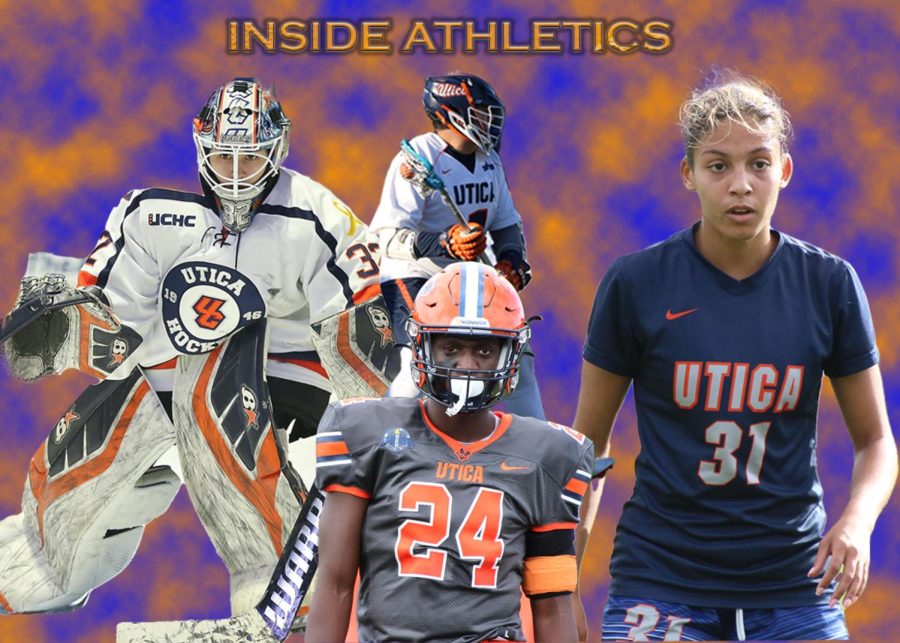‘We’re certainly very white’: Inside the lack of diversity in Utica University’s athletic programs
February 9, 2023
The athletes interviewed in this piece, from left to right: Angela Hawthorne, Rajveer Singh, Dan Amady and Ro Hernandez.
Angela Hawthorne didn’t want to be an outfield hockey player, instead, she learned how to power push off the ice instantly just by watching other goalies. At 5-foot-2, it took her years of practice to get over the fear of standing in front of the crease.
Hawthorne grew up in Santa Clara, California, where she played her grassroots stages of hockey. She also comes from a mixed-race background. Her father is white and her mother is a Vietnamese immigrant. Her dad played beer hockey for 10 years and introduced her to the sport at 11 years old.
“Some people sometimes see me as only white and some people only see me as Asian,” Hawthorne said. “It’s very difficult [because] I am different and sometimes I don’t fit in culturally and also [have] to educate people on it too just because they’re not exposed to it.”
Despite initiatives to foster diversity across colleges and universities and measures by the National Collegiate Athletic Association to create a more inclusive playing field, 62% of student-athletes across Divisions I, II, and III are predominantly white, according to the 2022 NCAA demographics database. In Division III, 72% of student-athletes are white.
At Utica University, student-athletes make up 27% of the student population with 609 athletes as of fall 2022. The school’s numbers, however, exceed the NCAA’s margin as white athletes make up 76% of Utica’s student-athlete population. The university also had 2,265 undergraduate students with 72.8% being predominantly white. As a predominantly white institution (PWI) the lack of diversity that the school experiences as a whole runs deeper in its athletic programs.
‘I am different.’ Angela Hawthorne– Women’s Hockey
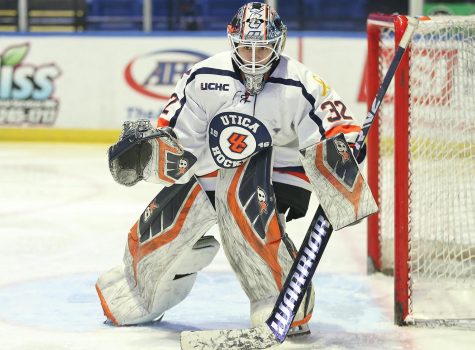
“Being from California, our travel girls team that I played with the majority of five or six years we were due to the demographics still mostly white,” Hawthorne said. “But we had probably one-third or a half of the girls Asian or of a different race so that was kind of cool to have that representation.”
Hockey isn’t as popular on the West Coast so Hawthorne went on to play postgraduate hockey in Michigan and called it a reality check from seeing far fewer Asian players than before. The lack of diversity seen in hockey was already a challenge for her in the middle stages of her career.
“The NHL doesn’t have that many Asian players to begin with, let alone non-white players in general, and even in women’s hockey there’s not that much representation, to begin with,” Hawthorne said. “I was lucky to have my current trainer that I work with [who] is a Filipino. She’s been like a big role model for me.”
Data from the Office of Institutional Effectiveness shows that over the past seven years, 136 out of 164 Utica’s women’s hockey players were white which is equivalent to 82.9% of the program’s players and of that 164 only two were Asian.
Dave Clausen, women’s hockey head coach at Utica University, said ice hockey as a sport worldwide is not diverse and in order to have more diversity on the Utica team there must be diversity on high school hockey teams.
“It’s not an easy situation in the hockey world,” Clausen said. “I will look at my team and we’re certainly very white, that’s a fact. If I’m gonna have more diversity on my team, there has to be more diversity in hockey when kids are 8, 10, and 12 years old cause I’m stuck recruiting what’s there when there are juniors and seniors in high school.”
At Utica University, Hawthorne is one of seven Asian athletes. She said the gap between white players and everyone else at Utica is eye-opening and believes the institution should make more conscious recruiting efforts to look into players backgrounds and take that into account.
“In [terms] of the Asian athletes, we have a couple on our team so taking away us I can probably name the rest of the athletes just because there’s really not that many,” Hawthorne said. “I just think that [putting] more focus on being aware of that at the minimum and taking that into account that if there’s the opportunity to diversify our school we should take the chance.”
‘I made sure I wasn’t acting out of character.’
Ro Hernandez– Women’s Soccer
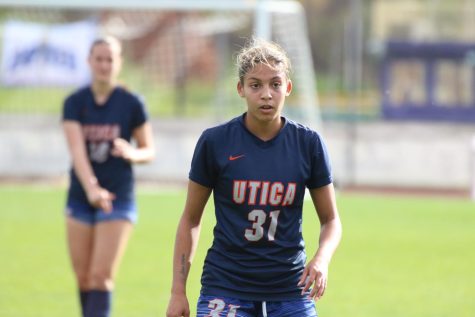
While at SUNY Cortland, Ro Hernandez was mistaken for another brown girl in a photo after her former teammates accused her of being in a bar, which was prohibited during the season. This led to an argument between her and the coach and became the final straw.
“I would speak up for myself and the Coach didn’t really like that,” Hernandez said. “She just believed that the picture that was shown to her of a short brown curly haired girl out at the bar and they thought it was me. It wasn’t me. I left that school [as a result] of racial discrimination because of soccer.”
Hernandez transferred to Utica after playing for three years at Cortland. Leaving a predominantly white program for another, she said there was more diversity at Cortland but she has received more support from coaches at Utica. Her biggest struggle was finding confidence due to a lack of support and getting an on-field suspension. At one point she wanted to quit during the last two games of the season but said yes to finishing, a decision she regretted.
“I don’t really have a problem with the team itself,” Hernandez said. “Sometimes my teammates wouldn’t back me, it would only really be my coach.”
After past incidents at Cortland and a lack of support for teammates at Utica, Hernandez kept her guard up to protect herself while playing but let it down once and said it worked against her.
“There were issues on the team when I started to let my guard down and show my true colors,” Hernandez said. “This season I kind of took a different approach and was mainly focused on being there playing soccer. I didn’t have anything in common with my teammates. I just focused on getting better.”
The pressure that comes with being a woman of color in sports weighed on Hernandez. She recalled times at Utica when she had to make sure she wasn’t acting out in any sort of way and remained professional and proper to protect her image.
“I always made sure I was on my shit,” Hernandez said. “I made sure I wasn’t acting out of character because I felt if I did people would view me in a certain way, especially in the athletic center.”
On the Utica women’s soccer team, 22 of 27 players are white and three are Hispanic as of fall 2022. Hernandez thinks recruiting is huge and the problem with Utica coaches is that they are not focused enough on looking in different places for players. As a result, they miss out on a huge demographic of players wanting to play college soccer.
“They have the choice to go to recruit wherever,” Hernandez said. “I feel like in Utica the recruiting happens more locally and in those cities and those towns the soccer programs are mainly white people. If you go more recruiting by where I live Carmel, Westchester, New York City, you’re gonna get a little more diversity.”
‘I’m not thinking about the person’s color on my team.’ Rajveer Singh– Men’s Lacrosse
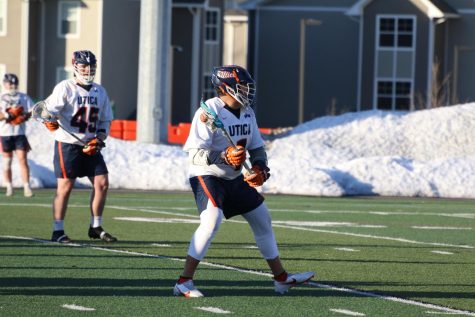
Rajveer Singh went to Thomas R. Proctor High School, 11 minutes away from Utica University. From an Indian Punjabi background, Singh played two sports before trying out lacrosse but had no intentions of playing at Utica.
As of fall 2022, 88.8% of the men’s lacrosse players were white, 4.44% are both Hispanic and Unknown, while 2.2% are Asian making it one of the least diverse rosters at Utica. The lack of diversity in the lacrosse program wasn’t a surprise to Singh because that’s the game and he’s playing just for the love of the sport.
“I’m not thinking about the person’s color on my team,” Singh said. “I try not to look at that. I’m just here to have fun and play with boys, that’s what matters at the end of the day.”
A game created by Native Americans as a means of religious expression has grown in many ways from its free participation and a means of training young warriors to a high-income sport. Singh recalled being discouraged from playing lacrosse due to the expensive costs.
“It was my freshman year and our package for lacrosse was like two-three [thousand dollars]. I was like, ‘Jesus. I didn’t know it was this expensive,’ ” Singh said. “With lacrosse, you need a helmet, stick, gloves, everything. It’s expensive but that’s how the game works.”
In NCAA men’s and women’s lacrosse, 83% of players were white in 2022. According to Statista, as of 2021, the median income for Black private households in America was $48,279 while white non-Hispanic households were $77,999.
The wealth gap that minority groups experience Singh said is a contributing factor to why lacrosse is a much less diverse and inclusive sport and finding ways to modify the cost barrier could help get more players into the sport.
“Donating equipment,” Singh said. “[To] schools that have students who can’t afford certain equipment [and] maybe doing a charity [to help] a school out would be good.”
‘Things aren’t going to change unless people make it change.’ Dan Amady– Football
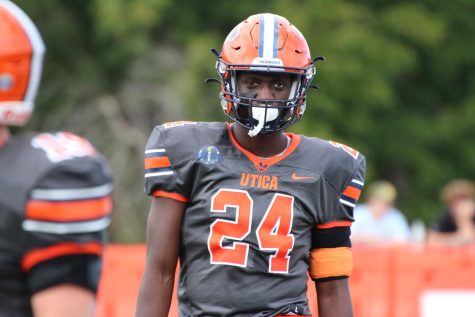
Dan Amady credits the stigma surrounding Black players and the kind of sports they are chosen and have to access to play to lack of exposure and backgrounds. Coming from a Haitian background, Amady started playing football in eighth grade—It was a sport his family wasn’t accustomed to.
“Growing up in a Haitian American background my parents didn’t really know the sport like that,” Amady said. “When I would go outside with my dad over the summer as a young kid we would kick a soccer ball around cause that’s how he grew up.”
Originally from Spring Valley, a predominantly Haitian area, Amady moved to Suffern at age 12. Moving to a new geographic location helped him discover sports he had never seen before, such as lacrosse, ice hockey, and crew.
“We didn’t have any of those sports back where I came from,” Amady said. “When you’re in a situation where you’re not really growing up playing a sport historically people look at trends and who’s done what in the past and majority rules wherever you’re at.”
The Utica football team had a 135-player roster as of fall 2022. Being a more extensive roster with 35% non-white players makes it one of the more diverse teams at the university. Due to a larger pool of diversity, Amady said the gap between white players and other ethnicities is startling but his experiences do not mimic those of other teams.
“It is kind of surprising to see there’s such drastic differences on these other rosters,” Amady said. “On the football team the people I’m around most of the time it doesn’t seem like there’s that high of a difference. It feels like we have a good balance of white athletes, and Black athletes.”
Diverse representation in leadership plays a role in creating a more comfortable space for minorities, Amady said, as a result of seeing people from similar backgrounds. Utica Diversity Quick Facts shows that only 3.7% of full-time staff and faculty are Black. The Utica football team had three Black coaches during the 2022 season making it one of the more diverse coaching staff in the athletic department.
“Football in terms of the numbers and the diversity might be the outlier at our school because of the size of our roster and the diversity of our coaching staff it trickles its way down through our roster,” Amady said. “We’re that outlier of having a more diverse team than maybe some of our other teams here.”
Utica’s Athletic Director Dave Fontaine said athletics is part of the university’s strategic plan to improve diversity on campus.
“I look at our departments and our coaches and we have all white coaches,” Fontaine said. “There’s diversity amongst that but it’s not representative of the student-athletes that we sometimes coach. When we advertise a position I encourage my contacts to encourage other individuals of underrepresented populations to apply for the job [because] we want diversity.”
According to Fontaine, making it intentional to recruit players from underrepresented populations and being specific are ways Utica can lessen the gap to make players feel more comfortable.
“I want to work to try to break that barrier down to make sure that everybody here in our department feels welcomed and feels like they have an opportunity whether it be a coach or student-athlete to succeed,” Fontaine said. “My job is to not only attract underrepresented populations but also to make sure individuals from those populations have a good experience here.”
Exposure, recruiting, and leadership are some of the contributing factors to the lack of diversity in Utica athletics and the school as a whole. The question of when this will change is yet to be seen but some athletes are optimistic because the topic is being brought up and more people are aware of it.
“When a trend is a certain way over time, things aren’t going to change unless people make it change,” Amady said. “And people won’t change until they recognize that a change should be made.”
This article was updated on May 29th, 2023 at 10:42 a.m.

